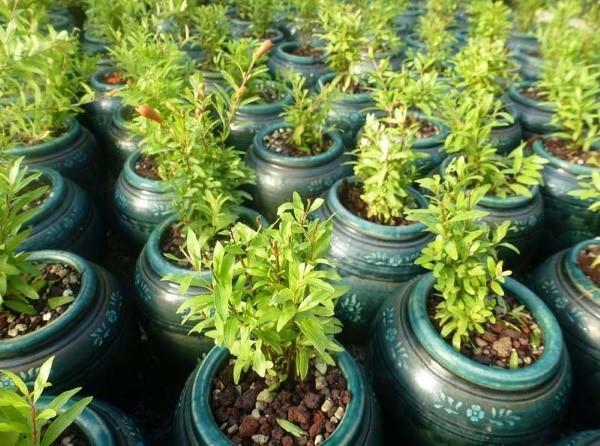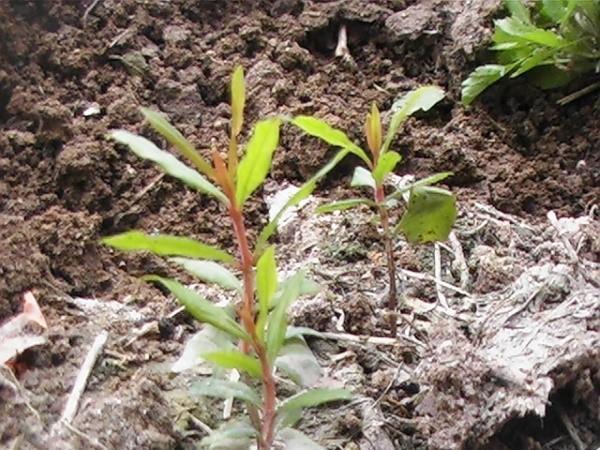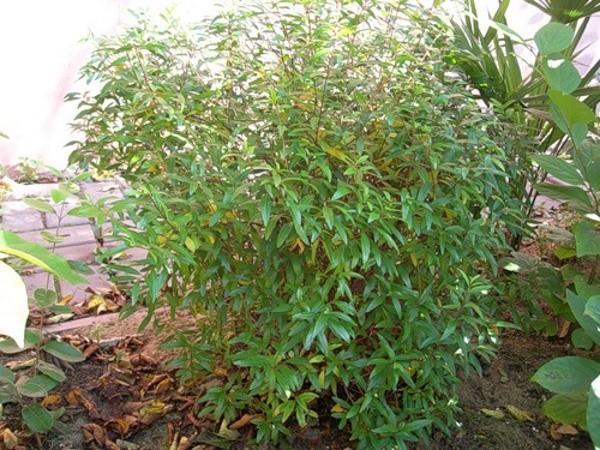We plant pomegranates in open ground correctly
 Pomegranate is considered a heat-loving culture, because its natural habitat is dry subtropics - where summer is hot, autumn is warm and long, and in winter the temperature does not drop below 15 degrees below zero. It is these factors that make gardeners living in regions with more severe weather conditions doubt that the plant can withstand their climate. However, not everything is so bad, and with proper care and attention, pomegranates take root very well and even bear fruit in the open field. What should you pay attention to if you decide to plant this exotic culture for our area in your garden?
Pomegranate is considered a heat-loving culture, because its natural habitat is dry subtropics - where summer is hot, autumn is warm and long, and in winter the temperature does not drop below 15 degrees below zero. It is these factors that make gardeners living in regions with more severe weather conditions doubt that the plant can withstand their climate. However, not everything is so bad, and with proper care and attention, pomegranates take root very well and even bear fruit in the open field. What should you pay attention to if you decide to plant this exotic culture for our area in your garden?
Read also:how to clean pomegranates quickly and correctly?
What kind of soil does pomegranate like?

An exception is wetlands - in soil with a high moisture content, where the groundwater is too high, the pomegranate cannot grow, because its roots will be constantly in the water.
Where to plant?
 But what the pomegranate needs most is good lighting, therefore, to plant a seedling, you need to choose the brightest place on the site. In addition, it must be warm, that is, no sign of a draft, north and east wind. In partial shade, the grenade will be dark, even if it does not disappear, it will not fully develop.
But what the pomegranate needs most is good lighting, therefore, to plant a seedling, you need to choose the brightest place on the site. In addition, it must be warm, that is, no sign of a draft, north and east wind. In partial shade, the grenade will be dark, even if it does not disappear, it will not fully develop.
It is best to plant the tree in such a way that it is protected from the wind by a building wall or fence.
Landing features
Garnet - this is not an ordinary fruit tree that we plant in our garden. Planting a pomegranate has its own nuances that must be taken into account in order for it to successfully take root, namely:
- The planting hole should be three times the diameter of the seedling's root system. This is necessary in order to introduce into it the "starting" soil mixture.
- Accordingly, the soil in the pit before planting should be prepared, made loose and nutritious. The best option is to find fertile soil, mix it with compost, and fill most of the hole. This will be enough, no organic matter needs to be introduced, (humus for pomegranate is contraindicated).
- It is necessary to plant a seedling so that its lower skeletal branches are under a layer of earth. They will also give their roots and the plant will eat better.
Since the pomegranate in our climate is able to grow only under the condition of shelter for the winter, this must be taken into account even at the planting stage. In order to cover the tree it was easier, the seedling must initially be installed at an angle of 45 degrees.
Moisture and watering requirements
After planting, water the pomegranate abundantly and repeat this procedure again every other day. In the future, pomegranates do not need frequent watering. The root system of the tree is striking in its power and size, because it is able to go in width beyond the diameter of the crown twice, while plunging three meters deep. This allows the pomegranate to endure the lack of natural precipitation, extracting food for itself in deeper soil layers, which increases its drought resistance.